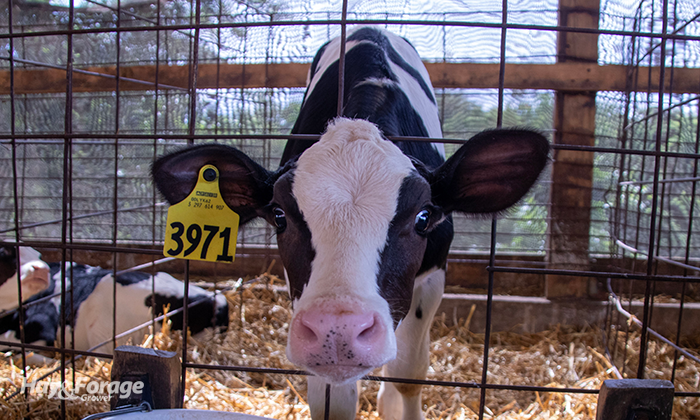
In any debate, there are often two camps that form on either side of the issue and support opposing views of the topic at hand. Then, there are the people who sit on the fence. Over time, that fence gets uncomfortable, and at some point, you’ll have to hop off and choose the side of the fence on which to stand.
Feeding forage to dairy calves during the preweaning period is one of those arguments that has created a clear divide in practices and opinions. On one hand, research shows that providing forage with milk and calf starter can boost starter intake and average daily gain, and it can discourage unwanted behaviors like tongue rolling and pen-directed sucking. On the other hand, this type of supplementation can have the opposite effect on calf intake and gain when forage exceeds 10% to 15% of total dry matter intake.
An article from Penn State University Extension explains a study that was recently published in the Journal of Dairy Science that examines what happens when calves are fed different types of forage before weaning. The researchers also followed animals in the study through their first lactation to determine whether forage supplementation influences animal performance and milk production long term.
Better outcomes from alfalfa
For the experiment, the researchers assigned 60 Holstein heifer calves to three treatment diets: pasteurized whole milk and pelleted starter; milk, starter, and oat hay; or milk, starter, and alfalfa hay. On a dry matter basis, the oat hay had 9.3% crude protein (CP) and 53.3% neutral detergent fiber (NDF). The alfalfa hay had 16.8% CP and 36.1% NDF. Hay was fed at a rate of 10% to 15% of average starter intake.
Calves received hay from 30 to 73 days of age, and after weaning, housing and management were the same for all animals. The results show that calves fed alfalfa hay consumed more forage than those getting oat hay; however, the oat hay-fed calves had higher total dry matter intakes. With that said, growth was similar across all treatment groups, and the researchers suggest that minor differences in nutrient composition among the diets might not have been enough to significantly affect growth rates given the low forage inclusion rates.
The researchers note that both hay types had low total volatile fatty acids, which support the growth of rumen papillae and aid rumen fermentation. After analyzing rumen fluid samples from the calves in the study, they confirmed that forage supplementation boosted rumen pH, which could ultimately reduce the risk of acidosis caused by high starch levels in calf starter.
Average daily milk production was up during first lactation for calves fed alfalfa hay. Those animals also tended to breed younger compared to the oat hay-fed calves and those fed the control diet. The researchers emphasize that both of these outcomes carry economic value to dairy farms.
Overall, the decision to incorporate forage into preweaned calf diets can be complex and farm specific. Forage type also matters. Results from this study show calves fed alfalfa hay boasted the greatest short- and long-term benefits, but the researchers suggest that farmers should also consider forage quality, inclusion rate, and milk and starter form and volume before choosing which side of the forage supplementation fence to stand on.
For more information, access the full study here.
